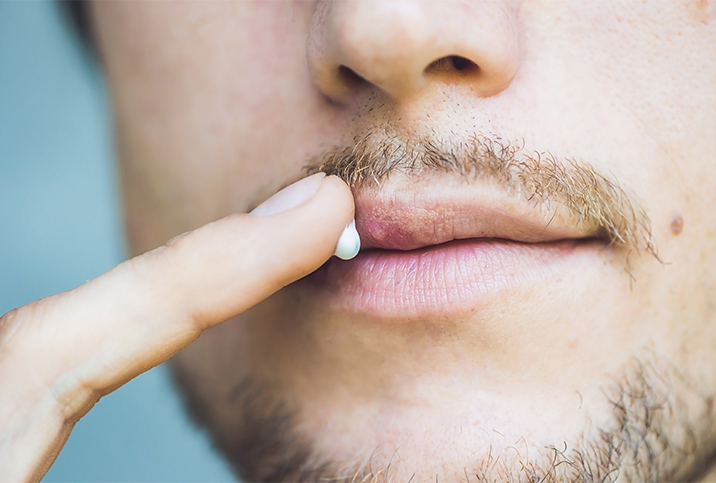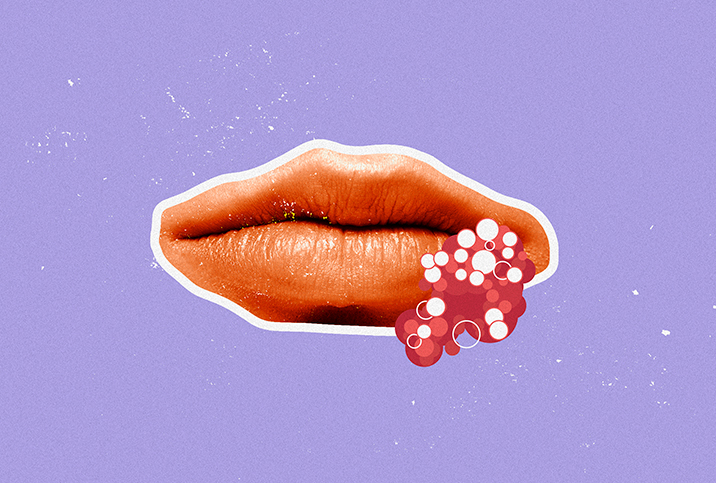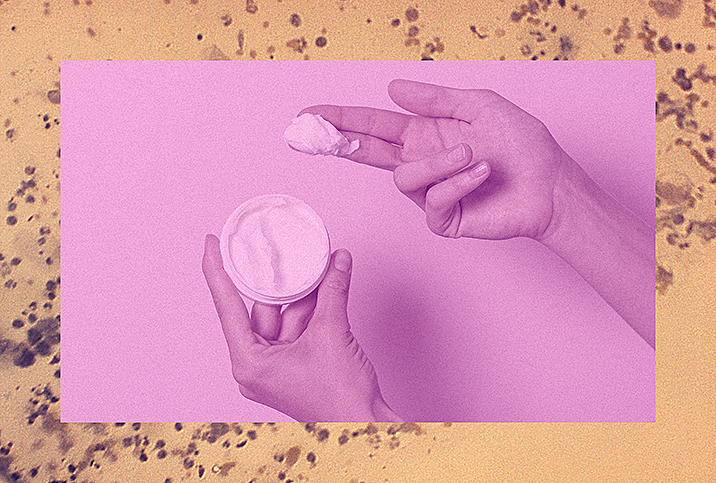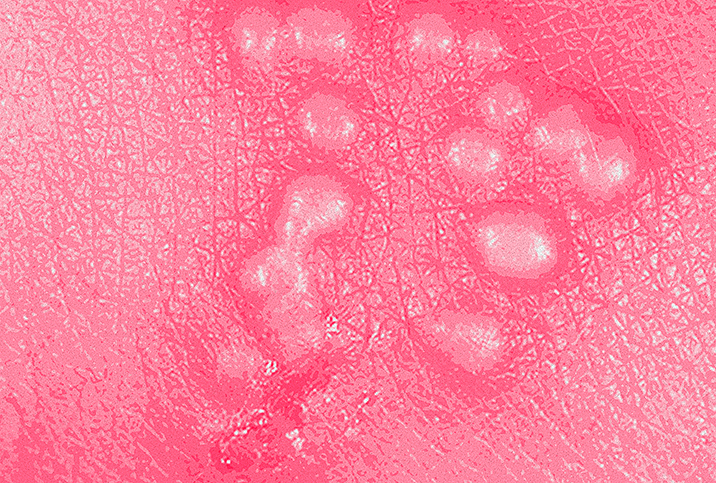Treatment Options for Oral and Genital Herpes

A highly contagious virus that causes painful sores around the mouth and/or genitals, herpes simplex virus is one of the world's most common infections. It exists in two forms: herpes simplex virus 1 (HSV-1) and herpes simplex virus 2 (HSV-2).
HSV-1 is more common, affecting a whopping 67 percent of people worldwide under the age of 50, and causing 4 out of 5 cases of oral herpes. HSV-1 can cause genital herpes when transmitted through oral sex.
HSV-2 is less pervasive, yet it still impacts around 500 million people worldwide, or about 13 percent of the global population from ages 15 to 49. It is the primary cause of genital herpes and is predominantly transmitted through sexual contact.
Risk factors and transmission of herpes
Oral herpes is typically passed through kissing or oral sex; genital herpes is spread by sexual contact, including vaginal, anal or oral sex, with an infected person. HSV is more easily transmitted when there is an active outbreak, but contracting herpes from someone with no obvious symptoms is possible. Oral herpes is often contracted in childhood through contact with the saliva or cold sore of an infected person.
Risk factors for genital herpes include having a large number of sexual partners, having sex for the first time at a young age, history of other sexually transmitted infections (STIs) and having a weakened immune system. It is more common in women than in men.
Despite its high prevalence, the majority of people with herpes are unaware of their status, as symptoms can be mild or mistaken for other common conditions. While herpes is rarely dangerous, it can be physically painful, and due to societal stigma, cause varying degrees of emotional stress.
Symptoms of herpes
Initial symptoms of an HSV infection appear around four days after contact with the virus. The initial outbreak is usually the worst stage of the disease, causing flu-like symptoms and sores on and around the mouth or genitals. For both oral and genital herpes, itching and burning of the skin precede the development of highly infectious fluid-filled blisters, which eventually break to reveal painful ulcers. These blisters scab over and heal toward the end of the symptomatic period, which typically lasts around three weeks.
In oral herpes, these lesions, more commonly known as cold sores, can appear on or around the lips, below the nose, inside the mouth on the tongue, gums, insides of cheeks, and roof of the mouth, and the throat and tonsils, and can make eating and drinking painful. Swollen or bleeding gums are also possible, and swollen lymph nodes are common.
Genital herpes sores can appear on the penis and scrotum in men; the vagina, cervix and vulva in women; and on the anus, thighs, butt and urethra, which may make urination uncomfortable.
While sores are extremely painful and clearly defined in some people, other people experience only minor redness, swelling and heat, or tiny red bumps or white blisters on their mouth or genitals. Some infected people notice no symptoms at all. Women tend to experience worse symptoms than men.
Treatment of herpes
The initial infection of HSV is treated with oral antiviral medications, including acyclovir, valacyclovir and famciclovir. These medications are taken for seven to 10 days, or longer if symptoms have not subsided. Research indicates topical antiviral medications (acyclovir, penciclovir) may be less effective but can be used in addition to oral treatments. Over-the-counter medications, including ibuprofen and acetaminophen, can reduce pain and treat fever and other flu-like symptoms.
People infected with oral herpes should be instructed to monitor their hydration and know critical signs—dizziness, dry mouth, confusion, decreased urination—of severe dehydration, which requires medical treatment.
Not everyone is a candidate for antiviral medications. Antivirals shouldn't be taken in combination with certain medications, including certain hepatitis B and HIV medications, other antivirals, clozapine, gentamicin or nonsteroidal anti-inflammatory drugs (NSAIDs), including ibuprofen. However, antivirals are safe to take during pregnancy and are instrumental in enabling HSV-2-positive pregnant women to prevent genital herpes outbreaks during delivery.
Common side effects of antivirals include headaches, nausea, vomiting, dizziness, diarrhea, rash, itching or mild skin pain and sensitivity to light. Acyclovir is typically the least expensive of the three antivirals used for HSV and is usually covered by insurance, but costs and coverage vary by plan.
Counseling on transmission prevention is an important aspect of treatment. Doctors can explain how the disease is spread and how an infected individual can prevent spread to others. Untreated, symptoms of each outbreak last for two to four weeks. With treatment, symptoms may last as few as seven days. Treatment with an antiviral is most effective if it is started within 48 hours of the onset of symptoms.
Lifestyle and long-term management
Unfortunately, there's currently no cure for HSV-1 or HSV-2—herpes infections are lifelong. However, an important part of treatment includes long-term management of the virus to reduce the number of recurrences and their severity and duration.
Long-term care varies from person to person, depending on their preferences, tolerance of antiviral medications, how often and severely they experience symptoms and medication costs. Patients with frequent outbreaks (more than six per year) may be recommended for a chronic suppressive treatment, in which daily antiviral medications tamp down the virus in the body and reduce the number of times it reemerges. Acyclovir, famciclovir and valacyclovir are commonly used as suppressive treatments and can reduce recurrences by up to 80 percent. Suppressive therapy also reduces transmission in couples in which only one partner has the virus.
People who experience less frequent outbreaks may opt for an episodic treatment regimen. This regimen incorporates antivirals only during an outbreak to reduce the severity and duration of symptoms. While this may result in more frequent outbreaks, it may be better tolerated by people sensitive to daily antivirals or more effective for people with less frequent but more severe symptoms. Episodic treatment for HSV is also a less expensive option.
Thankfully, symptoms tend to be less severe over time, and the frequency of outbreaks typically decreases with age. Lifestyle changes and alternative remedies may also help treat symptoms.
Both warm and cold compresses may be helpful when a sore is forming, as is keeping sores clean and dry. Homemade pastes made of baking soda or cornstarch can reduce itching. Apple cider vinegar watered down with warm water may be helpful due to its anti-inflammatory and antiviral properties. Antioxidant and omega-3 fatty-acid-rich foods can boost the immune system to fight the virus and minimize inflammation. Lysine-rich foods, such as soybeans, dairy, navy beans and green peas, are linked to suppressing herpes.
Lifestyle changes can also help prevent outbreaks, which are commonly linked to stressors on the body, including sunlight, surgery, illness, injury, emotional stress and menstruation. Studies have linked UV light, including high-intensity or long durations of sun or UV exposure, to HSV reemergence. Covering up on sunny days and wearing high-SPF (30 or higher) sunscreen are effective means of reducing the risk of recurrence. Taking antivirals beginning one day before surgery can help prevent related outbreaks.
Practicing good sleep hygiene and stress-reducing strategies can go a long way. Try to go to bed at the same time nightly, avoiding screen use (cellphones, iPads, laptops, TV) in the hour before bed. Incorporate yoga, meditation and mindfulness, gardening or a hobby into your life to restore calm. Stick to a balanced diet, incorporating a wide variety of whole foods (get plenty of B vitamins, zinc, protein and probiotics), and avoid added sugars. Get regular exercise, and minimize or avoid alcohol and tobacco. Anything that supports health and well-being is likely to decrease the chance of a recurrence.
Breaking the stigma
Although 90 percent of adults are exposed to HSV-1 by the time they turn 50, the stigma around herpes, as with many STIs, remains a significant challenge. Many people who are diagnosed feel embarrassed or ashamed; they may stay home during outbreaks, avoid telling a partner about their status or even fear pursuing a relationship.
Social stigma can take a significant toll on mental health and quality of life. It can lead to depression, anxiety and an increased risk of other mental health problems. However, the majority of people with HSV are living their lives without these other problems. Herpes shouldn't cause embarrassment. There's nothing dirty or wrong about having an infection, and the sooner social discourse around it changes, the better. In the meantime, everyone can do their part by initiating honest conversations about HSV to educate friends, family members and partners.


















